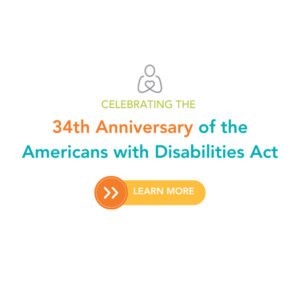A recent Becker’s Hospital Review roundup illuminated important statistics about the prevalence of medical debt in the U.S. Here’s what you need to know.
75% of patients with medical debt owe more than $2,000.
The majority of patients must pay or pay off bills of over $2,000 to eliminate their medical debt burden. Keeping in mind that the median bank account balance in the U.S. is just $5,300 according to the Federal Reserve, including both checking and savings, it’s no wonder that medical debt can spiral into an overwhelming daily source of anxiety for the average patient family.
8 in 10 patients with medical debt have delayed medical care because of the cost.
One of the most corrosive impacts of medical debt is its capacity to force patients to choose between quality care and financial wellbeing. Eighty percent of patients have delayed medical care because of concerns about their inability to afford it. Delaying care can lead to not only immediate health concerns and risks but also a slow escalation of potentially life-threatening concerns or health warning signs.
37% of patients have skipped paying other bills to pay medical bills.
This new research proves that the often-cited example of choosing between food or electricity and medical care is not at all far-fetched for American families. More than one-third of patients have already had to make the decision to skip paying other critical bills to afford their health care or pay off medical bills.
The Mental and Emotional Toll of Medical Debt
The immediate financial threat and impact of medical debt is typically an easier “symptom” to track than how medical bills affect patients on a mental and emotional level. However, a new survey revealed key takeaways about how medical debt personally impacts patients—and the findings about mental and emotional health are as damaging as statistics about the financial toll.
The two emotions most patients experience when paying medical debt are relief and intimidation.
The ironic reality of medical billing experiences is that paying for care provides both a feeling of relief and a sense of intimidation. Paying medical bills and navigating the billing system can easily become daunting and overwhelming for patients. Being able to afford care or pay off debt provides an instant sense of relief, but few patients have the opportunity to avoid engaging in the intimidating payment process once again when their next need arises.
56% of patients say medical bills are a top source of stress.
Medical debt is a dark cloud over American households, leading more than half of patients to report that medical bills are a leading source of daily stress.
64% of patients agree that paying a medical bill is highly stressful.
Even when they are able to meet their medical care cost needs, patients report that the process of addressing and covering outstanding medical bills leads to feelings of stress.
34% of patients have lost trust in a health care provider due to billing experiences.
Medical billing and navigating medical debt can lead patients to feel misled and overwhelmed, which can translate into severing ties with specific health care providers or insurance companies due to a feeling of broken trust.
Only 25% of patients describe their medical billing experience as “personalized”.
It’s no wonder that medical billing is stressful and intimidating when just a quarter of patients feel that the experience of paying medical bills is personalized to help meet their needs.
An equal number of patients describe their medical biller as “compassionate” and “aggressive”.
Another ironic split within the medical billing system: patients are just as likely to describe medical billers as compassionate or aggressive. The lack of consistency across these patient encounters with billing providers may lead to even more feelings of intimidation and stress as patients wonder what they can expect from their next billing experience.
Overall, patients reported four top complaints about their medical billing experiences:
- Lack of customer support
- Surprise costs
- Lack of explanation of insurance coverage and benefits
- Unclear charges
From lack of personalized assistance to unclear benefits and charges, it’s easy to see how the financial burden of medical debt can take a significant and ongoing mental and emotional toll on patient families.
Finding Relief Outside the Billing System
At Help Hope Live, we know that repairing the medical cost and billing systems is not yet within reach. However, what we can do is provide trusted, personalized, and compassionate medical fundraising help so that patients and families never have to face this complex and overwhelming system alone.
We want to break through the impersonal and overwhelming modern medical billing experience by sending out a caring lifeline of community support and resources to patients across America. That’s what we’ve committed to since 1983—and with unique benefits that protect and nourish our clients on their fundraising journeys, we’re not stopping until the medical billing system fully supports every single patient and family.
Written by Help Hope Live










